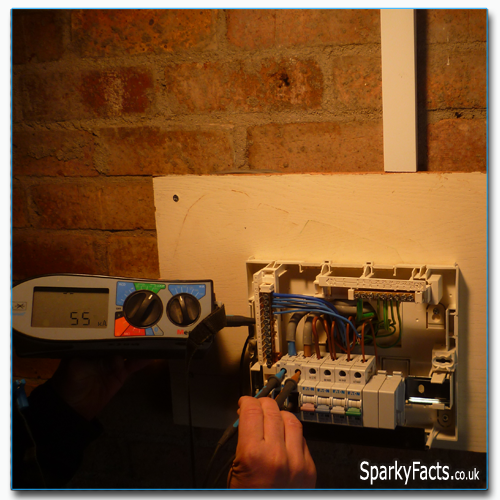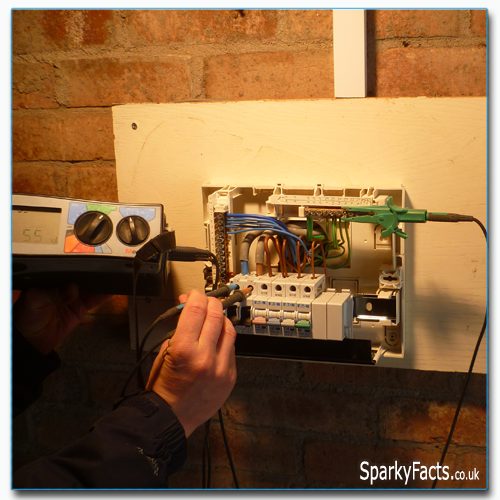Prospective Fault Current Testing
What is Prospective Fault Current?
There are two definitions to remember:
The Prospective Short Circuit Current is the maximum current that could flow between Line and Neutral conductors on a single phase supply or between Line conductors on a three phase supply.
The Prospective Earth Fault Current is the maximum current that could flow between Live conductors and Earth.
The higher of these two values will be noted down as the Prospective Fault Current (PFC).
The Prospective Short Circuit Current test sequence:
![]() This is a live test so extra care is advised!
This is a live test so extra care is advised!
Step 1. Use Prospective Fault Current tester or select the PFC function of a multifunctional tester such as the Megger 1553, and make sure that the supply is ON, but the Main Switch is in OFF position.
Step 2. Connect the test leads on the incoming side of the Main Switch, one test lead on Line and another on the Neutral terminals of the Main Switch.

Step 3. Press TEST and make a note of the value (kA).
For three phase installations test each phase separately and double the measured reading (test between Line 1 and Neutral, then Line 2 and Neutral and last Line 3 and Neutral).
Some test meters require that the third (usually green) lead to be connected on the Neutral during this test. Please refer to the test meter manufacturer's instruction.
The Prospective Earth Fault Current test sequence:
![]() This is a live test so extra care is advised!
This is a live test so extra care is advised!
Step 1. Use Prospective Fault Current tester or select the PFC function of a multifunctional tester such as the Megger 1553, and make sure that the supply is ON, but the Main Switch is in OFF position.
Step 2. Connect the test leads on the Line and Neutral terminals of the Main Switch, as well as on the Earth terminal (usually green lead).

Step 3. Press TEST and make note of the reading (kA).
For three phase installations test each phase separately and double the measured reading. (L1 - N - CPC, L2 - N - CPC, L3 - N - CPC)
Prospective Fault Current
Having obtained these values by the measurements described above, you will be required to select the highest value and note it down on the Electrical Installation Certificate as the value of PFC.
The value of PFC obtained should be compared by with the breaking capacity of all the protective devices within the installation. The breaking capacity of the protective devices should be greater than the value of PFC.
The Inspection and Testing C&G 2391 practical exams
Regulation 612.11 of BS 7671 requires that the prospective fault current under both short circuit and earth fault conditions be determined for every relevant point of the installation.
On the City and Guilds 2394 and 2395 practical assessment you will be required to measure the maximum value of PFC for the installation.
Next we move on to Phase Sequence testing.
Important things to remember:
![]() The test methods described above will give the maximum PFC for the installation. Because of this there is no need to test PFC at every relevant point. In real life conditions these tests could be necessary sometimes.
The test methods described above will give the maximum PFC for the installation. Because of this there is no need to test PFC at every relevant point. In real life conditions these tests could be necessary sometimes.
![]() During the testing remember to constantly inspect the installation for faults and signs of damages.
During the testing remember to constantly inspect the installation for faults and signs of damages.





